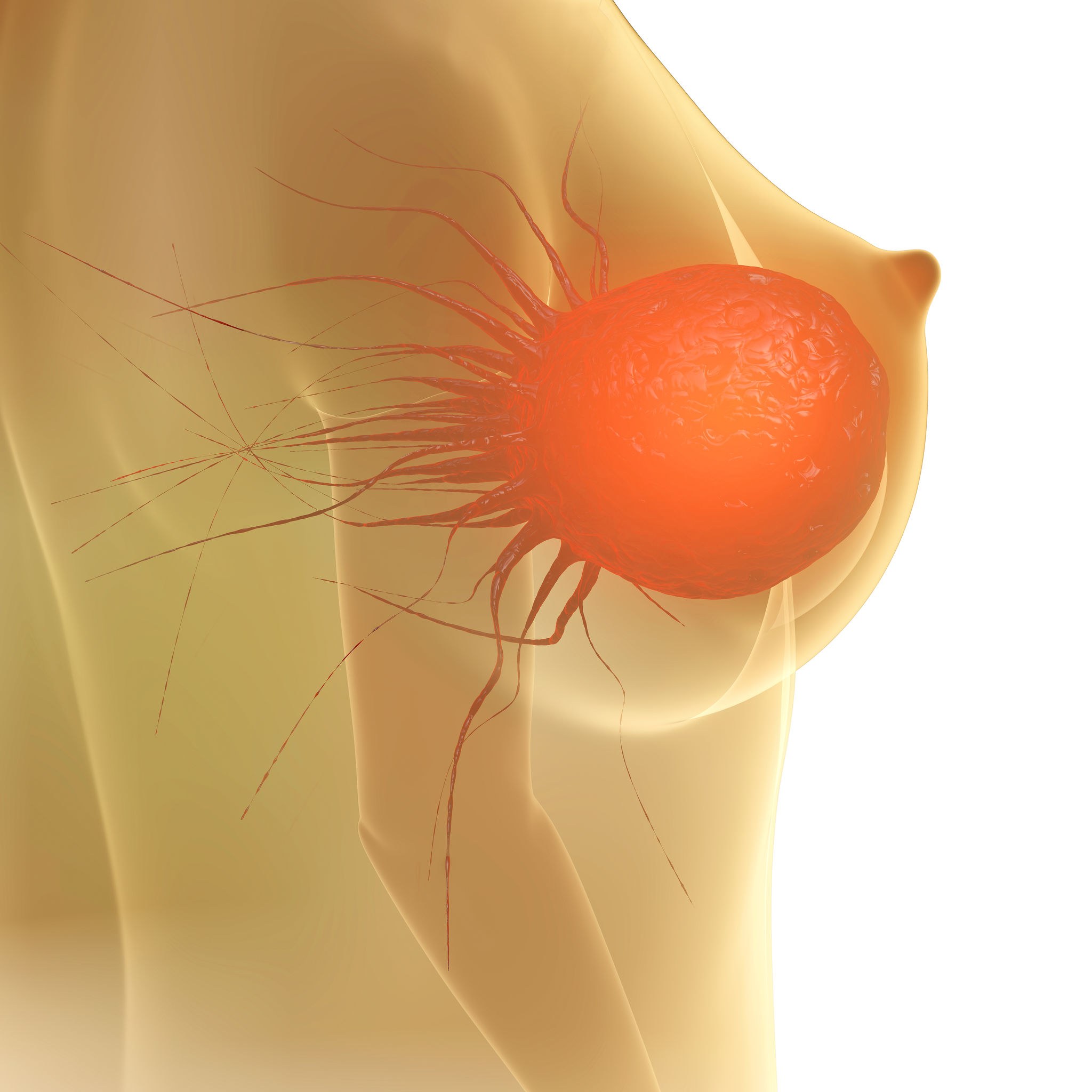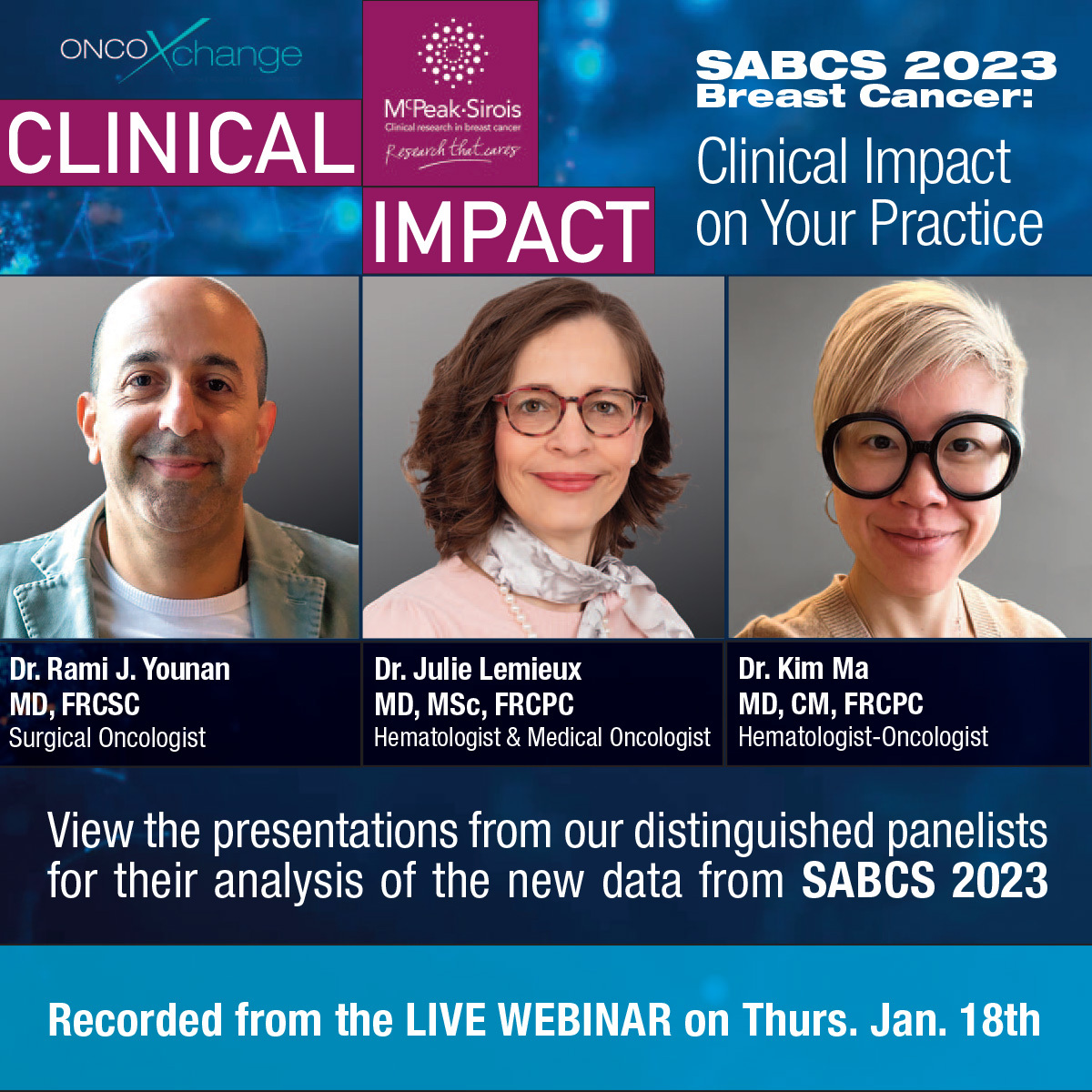
Metastatic breast cancer highlights from ESMO: MONARCH 2, MONALEESA 3, Impassion130, BROCADE 3 and more
November 2019
Wayne Kuznar for oncoXchange
Highlights in metastatic breast cancer presentations at the 2019 ESMO Congress included the latest trial results with CDK4/6 inhibition and the performance of treatments according to PD-L1 status
Highlights in metastatic breast cancer presentations at the 2019 ESMO Congress included the latest trial results with CDK4/6 inhibition and the performance of treatments according to PD-L1 status, according to Rebecca Dent, MD, head and senior consultant, medical oncology, National Cancer Center Singapore.
Among the studies she featured were the following:
Post hoc analysis of the Impassion130 study showed that the prevalence of PD-L1 positivity in immune cells by the Ventana assay was 46%. The proportion of patients who were positive for PD-L1 was enriched in other assays (22C3 and SP263). However, the SP142 assay identified the patients who had the longest median progression-free survival (PFS) and overall survival (OS) from the addition of atezolizumab to nab-paclitaxel in patients with advanced metastatic triple-negative breast cancer (TNBC). “The findings support the U.S. Food and Drug Administration decision to define the SP142 (IC ≥1%) PD-L1 assay as the companion diagnostic,” said Dent. Keynote-119, conducted in patients with heavily pretreated metastatic TNBC, used the PD-L1 immunohistochemistry 223C assay but also examined outcomes according to the combined positive score (CPS). CPS ≥1 was observed in about 65% of the patients, CPS ≥10 in about 31%, and CPS ≥20 about 18%.
There was no difference between single-agent chemotherapy and pembrolizumab on the endpoint of OS in the overall cohort. When PD-L1 was assessed as a continuous marker, response rates improved as the CPS score increased, with impressive “PFS and OS with single-agent checkpoint inhibitor,” said Dent.
In an exploratory post hoc analysis, in patients with CPS ≥20, the hazard ratio for OS was 0.58 (95% CI 0.38-0.85) with pembrolizumab.
The finding explains what is known about the biology of breast cancer through its evolution, according to Dent. “It confirms to us that we should be giving checkpoint inhibitors in first line or subsequent lines,” she said.
“We learned that in early breast cancer, we have higher rates of stromal tumor infiltrating lymphocytes, higher rates of interferon gamma signatures, and we learned in many of the translational sessions, that we’re getting better at identifying these patients.”
Immune escape occurs as the tumor evolves “so it’s not surprising that in later lines we really don’t expect to see benefit from single-agent checkpoint inhibition.”
The CDK4/6 inhibitor trilaciclib added to gemcitabine/carboplatin in patients with metastatic TNBC improved median OS from 12.6 months with gemcitabine/carboplatin alone to 20.1 months. Patients in the trilaciclib arms had an increased duration of chemotherapy exposure. “It’s possible that we’re seeing an immunomodulatory effect of the CDK4/6 inhibitor,” said Dent. The open-label, randomized phase II study suggests that CDK4/6 inhibition can increase platinum sensitivity but phase III confirmatory data are needed, she said.
In BROCADE3, heavily pretreated patients with advanced HER2-negative breast cancer with germline BRCA1/2 mutation were randomized in a 2:1 fashion to receive veliparib, 120 mg twice daily, plus carboplatin/paclitaxel or placebo plus carboplatin/paclitaxel. If carboplatin and paclitaxel were discontinued prior to progression, the dosage of veliparib or placebo was increased to 300 mg twice daily continuous, and to 400 mg twice daily if tolerated. The median PFS was 14.5 months in the veliparib arm versus 12.6 months in the control arm (HR = 0.705; P = 0.002). A small group of patients had durable responses: at 24 months, 34% of veliparib patients were progression free (vs. 20% in control arm), and at 36 months, 26% were progression free (vs. 11%). “Perhaps we have to consider a maintenance strategy just as our ovarian colleagues have done,” Dent said.
Updated results from the MEDIOLA study, conducted in patients with germline BRCA-mutated metastatic breast cancer, showed response rates of 60 to 70% with the combination of durvalumab and olaparib, which were slightly higher in earlier lines of treatment. PFS rates are 26 to 37% with single-agent PARP inhibition, which improved to only about 40% in MEDIOLA with the PARP inhibitor/checkpoint inhibitor combination, “but there were hints that if you were PD-L1-positive in this pretreated setting, it might actually select patients who get durable benefit,” said Dent.
Hazard ratios for PFS are about 0.5 in the first-line setting in patients with hormone receptor-positive breast cancer across all three CDK4/6 inhibitors in the MONARCH 2, MONALEESA 3 and PALOMA 2 studies. MONARCH-2 enrolled an endocrine-resistant population; eligible patients were those who relapsed on neoadjuvant therapy within 1 year or progressed on first-line therapy. An impressive improvement in OS was realized with the addition of abemaciclib to fulvestrant, with an HR of 0.75 and a median OS of about 47 months. In MONALEESA3, patients had ≤1 line of endocrine therapy; the median OS still hasn’t been reached with the combination of ribociclib and fulvestrant, with an HR of 0.71 compared with fulvestrant alone. “This shows us that CDK4/6 inhibitors work in the first- and second-line setting; I think it’s a class effect, all have shown a very consistent benefit in PFS and OS, and the endocrine backbone probably doesn’t matter,” Dent said.
In the PADA-1 study, ESR1 mutation was rare in early HER2-negative metastatic breast cancer “but after these tumors evolve under the selective pressure of treatment, more than half of the patients after treatment with an aromatase inhibitor plus palbociclib have ESR1 mutations,” she said.
The KATE2 study suggests an OS benefit with atezolizumab plus trastuzumab emtansine (T-DM1) in patients with PD-L1 expression on immune cells, with a 1-year survival rate of 94%, compared with 88% in the patients randomized to T-DM1 without atezolizumab. PFS was numerically greater with the combination in the subgroup of patients who had PD-L1 expression on immune cells (median PFS: 8.4 vs. 4.1 months; stratified HR = 0.60; 95% CI 0.32 to 1.11). Dent called KATE2 a small hypothesis-generating study.

test